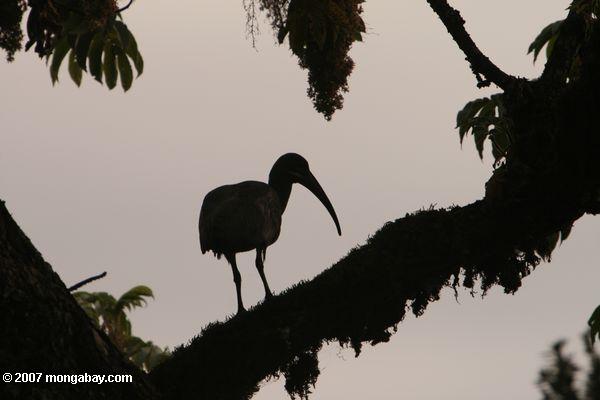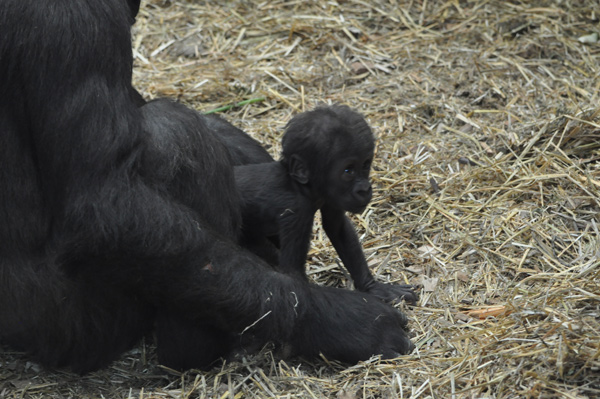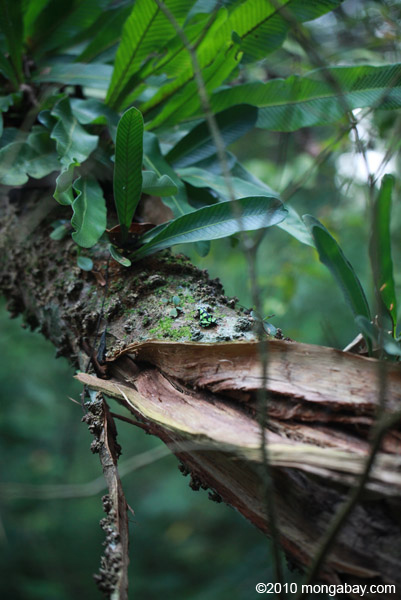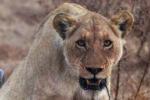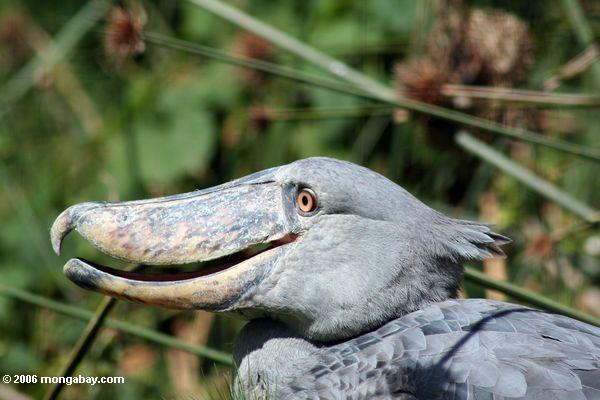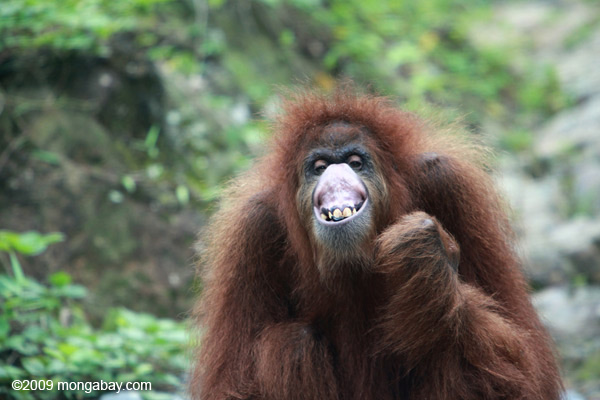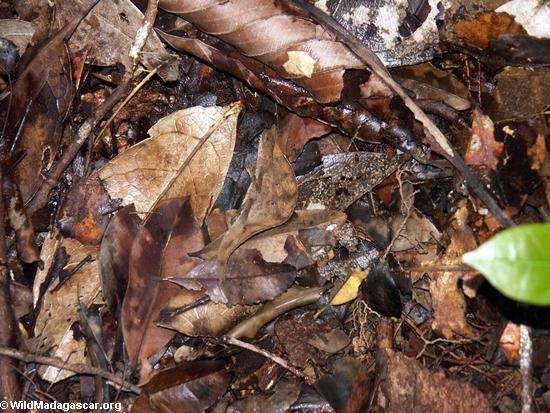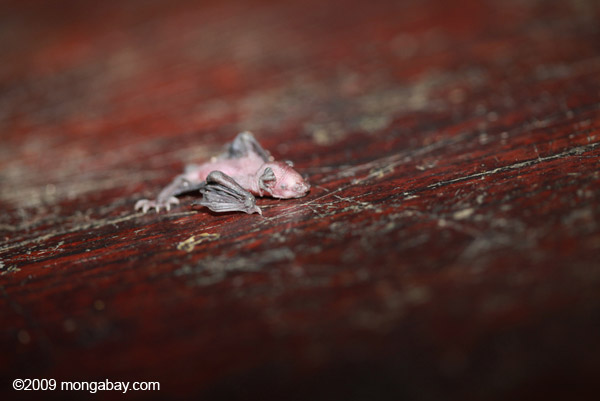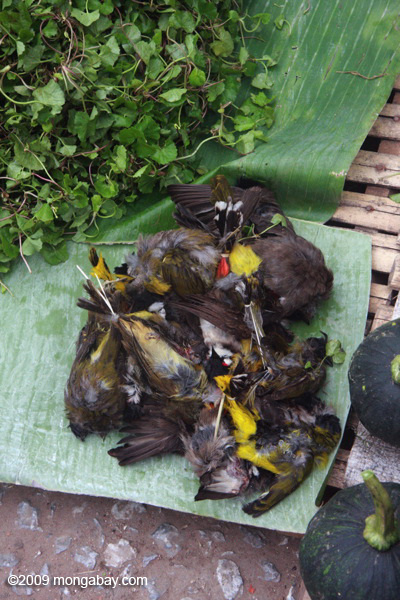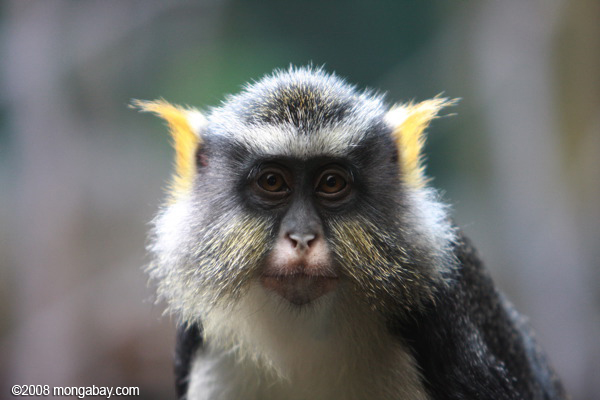Video: National Geographic donates 10 cents to lions for every viewing of The Last Lions trailer
Watch the new trailer for the film The Last Lions and National Geographic will donate 10 cents to help conserve lions in the wild. Watch it again, and another dime goes to conservation efforts. Plus, it’s a beautiful trailer! To find out more information about the film : The Last Lions. To read an interview with the film-makers: A lion’s story, an interview with the filmmakers of The Last...
Photos: tiny creatures of Gabon
Dung beetle working hard with a ball of dung in Gabon. Photo by Rhett A. Butler. In wildlife terms Gabon is known for gorillas, chimpanzees, forest elephants, and mandrills. But Gabon is also home to a reach variety of mini-fauna, a few of which are highlighted here. Copper-colored tiny spider in Gabon. Photo by Rhett A. Butler. Bright butterfly in Gabon. Photo by Rhett A. Butler. Caterpillar in Gabon. Photo by Rhett A. Butler. Beige...
Photo: silhouetted ibis
Hadeda ibis in a tree in Kenya. This species is classified as Least Concern by the IUCN Red List. Photo by Rhett A. Butler.
Video: giant leaf-tailed gecko hunting at night
Footage from the BBC’s new program Madagascar. The giant leaf-tailed gecko (Uroplatus fimbriatus) is found on the islands of Nosy Mangabe (mongabay.com’s namesake) and Nosy Bohara. To see photos of Uroplatus fimbriatus and other Malagasy geckos: Leaf-tailed geckos of...
Video: bizarre tenrecs communicating through ‘stridulation’
Footage from the BBC’s new program Madagascar. Native only to the island of Madagascar, the bizarre tenrec communicate in a way no other mammal in the world does: stridulation. This is the scientific term for communication by rubbing body parts together, such as crickets producing sounds by rubbing their legs against one another. In this case, tenrecs are capable of communicating by rubbing special spines on their back. To read...
Photos: baby gorilla takes first steps
Nicknamed ‘Tiny’, a three-month old baby male gorilla took his first steps a the Zoological Society of London (ZSL) Zoo. Tiny had not left his mother since birth, but the 12-year-old mom, named Mjukuu, encouraged him to begin exploring his home. While Tiny is beginning to get his first teeth, keepers say he has awhile to go before reaching a full-sized silverback male. Photos courtesy of...
Video: lemur evolution
From the Science Channel show Mutant Planet, this episode on Madagascar looks at the bizarre turns evolution takes on one of the world’s most unique islands. To find out more information and see more videos from the production: Mutant Planet:...
Emergency appeal for cassowarys impacted by Cyclone Yasi
Note: mongabay.com does not endorse the action below, but believes its readers may be interested in taking action or discussing the issue in comments. Northern cassowary from New Guinea, a relative of the Southern cassowary that survives in Australia. Photo by Rhett A. Butler. Tropical cyclone Yasi has left cassowarys to starve according to Australian NGO, Rainforest Rescue. Cassowarys eat the fruit of from tropical forests, but many...
Find the poison frog!
Look closely to spot the Green and black poison dark frog (Dendrobates auratus in the rainforest canopy in Colombia. See more photos below of the frog in Colombia. Unlike many Neotropical frogs, this species is listed as Least Concern by the IUCN Red List. Photos by Rhett A. Butler. Click to see more photos of poison dart...
Last chance to see: Visit Tanzania before “The Migration” is destroyed
With the government bent on building a road that scientists say will reduce the wildebeest herd by 500,000 animals, 2011 is the year to visit Tanzania to witness one of the world’s most incredible wildlife spectacles: the migration of more than a million wildebeest, zebra, and other animals across the Serengeti.
The unmissable Shoebill
A shoebill (Balaeniceps rex) in Uganda. This swamp-loving large bird is listed as Vulnerable by the IUCN Red List due to habitat loss, hunting, and nest disturbance. Researchers estimate that there are around 5,000-8,000 left in the wild. Populations in the Sudan still need to be determind, however. Photo by: Rhett A. Butler. Click to see more photos of Uganda’s...
What a face!
A Sumatran orangutan (Pongo abelii) makes a face. Listed as Critically Endangered the Sumatran orangutan is largely threatened by habitat loss to plantations, such as wood pulp and palm oil, and logging. After losing their forests, many orangutans, such as this one, are now housed in rehabilitation centers. Photo by: Rhett A. Butler. Click to see more photos of...
Hairy elephant-relative with baby
This bizarre animal, resembling a rodent, in Kenya is a southern tree hyrax (Dendrohyrax arboreus). Although the size of rabbit, the hyrax is actually closely related to the elephant and belongs to the Afrotheria clade that includes not only elephants, but manatees, sengis, tenrecs, and aardvarks. Four species of hyrax survive today. Photo by: Rhett A. Butler. Click to see more photos of...
Find the chameleon playing dead
Somewhere in this photo is the horned leaf chameleon (Brookesia superciliaris) playing dead. Native to Madagascar, Brookesia chameleons are among the world’s tiniest reptiles. Photo by: Rhett A. Butler. To learn more about Brookesia chameleons, including just how small they really are, and see more photos: Brookesia chameleons. If you can’t find the chameleon, it is revealed...
Rarely seen: a baby bat
A baby bat, referred to as a pup, in Brazil. Photo by: Rhett A. Butler. Click to see more photos of this bat pup.
Orphaned baby sloth
Orphaned baby three-toed sloth in the village of the Trio indigenous tribe in Suriname. The sloth was clinging to a stuffed panda bear. Photo by: Rhett A. Butler. Click to see more photos of the baby...
Songbirds to eat
While attention in the bushmeat trade is often given to mammals, birds–such as these songbirds for sale as food in Laos–are also eaten in many parts of the world. Photo by: Rhett A. Butler. Click to see more photos of the wildlife trade in Laos. Related Article: Laos Emerges as Key Source in Asia’s Illicit Wildlife...
Face to face
The Wolf Guenon (Cercopithecus wolfi) is native to central Africa. Photo by: Rhett A. Butler. Click to see more photos of the Wolf Guenon.
Orangutan Awareness and Caring Weeks Collide
post by by Melanie J. Martin, special to mongabay.com Sumatran Orangutan in Gunung Leuser National Park. Photo by Rhett A. Butler in May 2010 The Orang Utan Republik Foundation (OURF) and other conservation NGOs are celebrating November 7-13, 2010 as Orangutan Caring Week. The theme this year is “Back to Green,” which, according to OURF, implies returning orangutans to the wild while becoming more ecologically conscious. Meanwhile,...
Golden-fronted woodpecker
A lovely golden-fronted woodpecker (Melanerpes aurifrons) in Guatemala. This species is also present in Texas and Oklahoma of the US. Photo by: Rhett A. Butler. Click to see more photos of...

